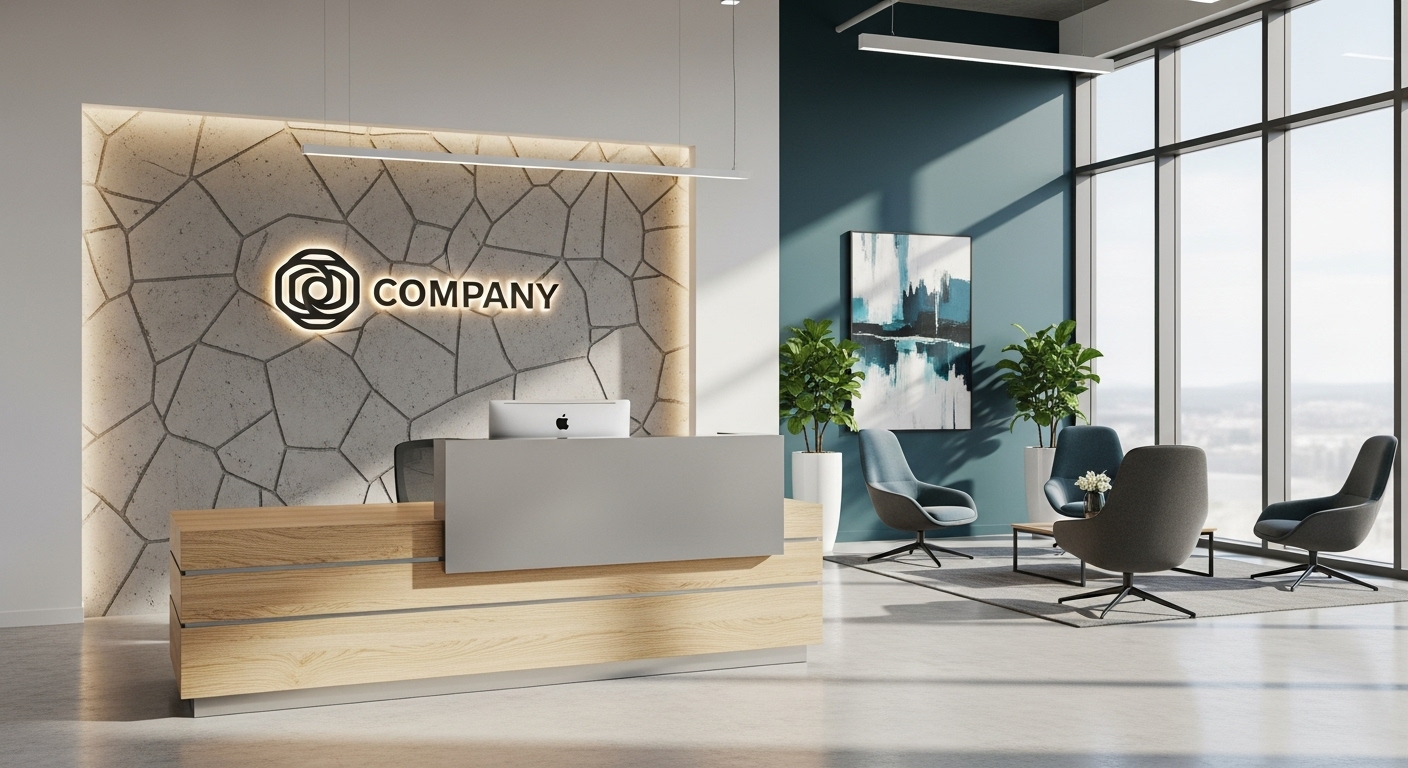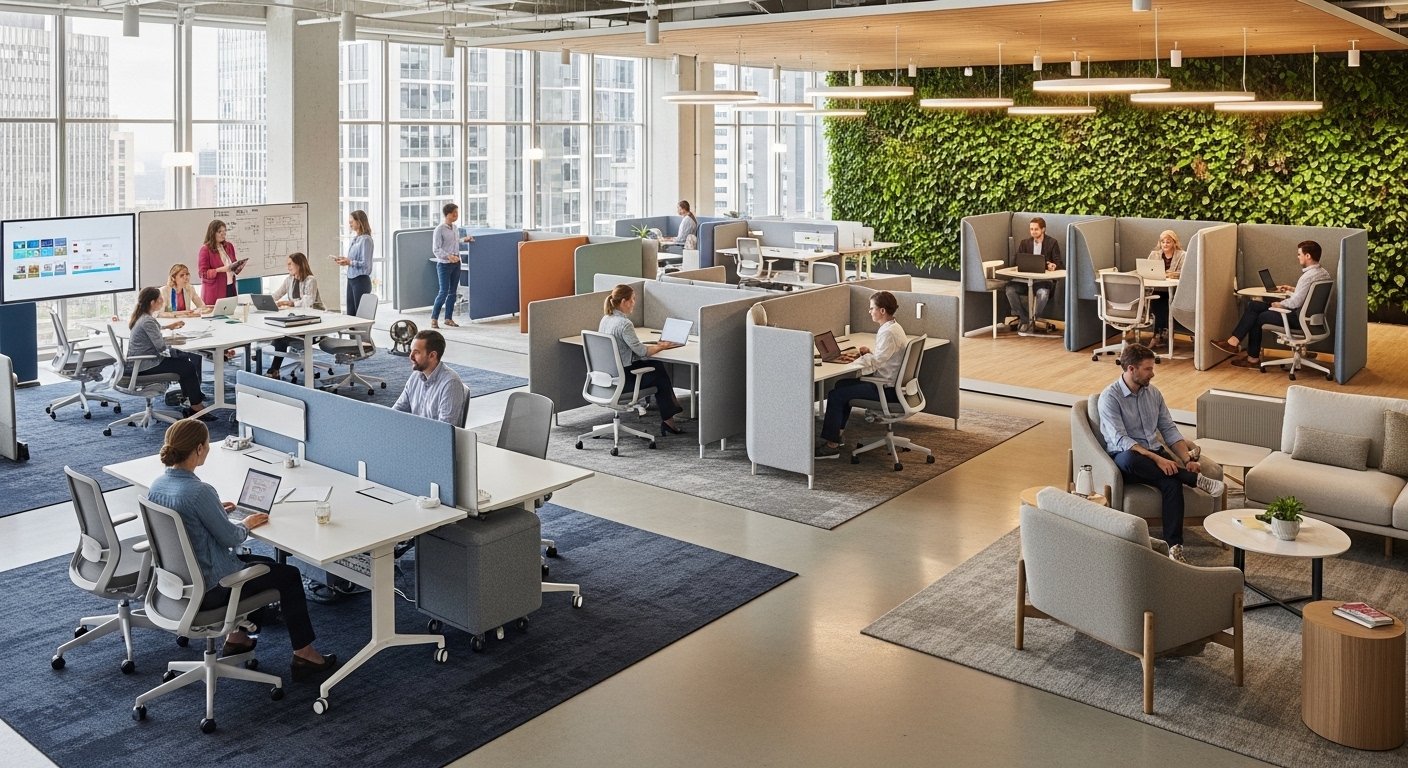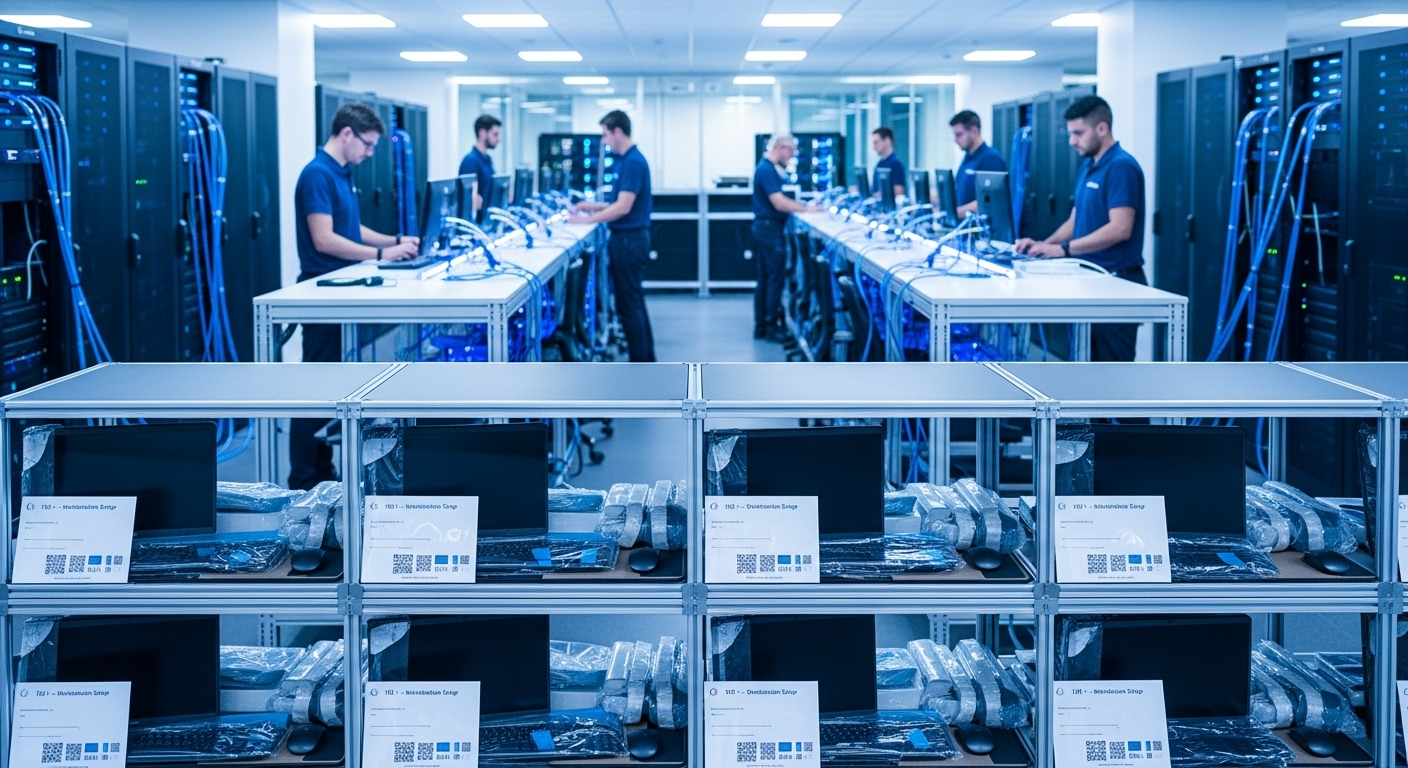Your office is often the first tangible interaction a potential client, partner, or top-tier candidate has with your company. Long before they shake a hand, they experience your brand through your physical space. This initial encounter, this ‘physical handshake,’ can set the tone for the entire relationship. In today’s experience-driven economy, a generic office with a logo slapped on the wall is a missed opportunity. An intentionally branded space, however, communicates your values, reinforces your culture, and builds an immediate, subconscious connection. It’s the difference between a forgettable meeting and a memorable brand experience. This guide will walk you through the essential steps to transform your workspace from a mere container for work into a powerful and authentic expression of your brand identity. We will explore how to decode your brand’s core DNA, strategically design key touchpoints, leverage sensory elements, and ensure your physical environment is a true reflection of the culture within it.
Beyond the welcome mat: decoding your brand’s spatial DNA
Before you pick a single paint color or piece of furniture, you must translate your abstract brand identity into a concrete design language. This process goes far beyond your logo and corporate colors; it’s about capturing the very essence of your company’s personality and values. Start by asking fundamental questions: Is your brand innovative and disruptive, or traditional and reliable? Is your culture energetic and collaborative, or focused and meticulous? The answers form the foundation of your spatial DNA. Create a dedicated ‘Physical Brand Style Guide’ that outlines these principles. This document should define the mood and feeling you want to evoke—perhaps ‘calm confidence,’ ‘dynamic creativity,’ or ‘approachable expertise.’ It should specify materials, textures, and even the quality of light that align with this identity. For example, a fintech firm emphasizing security and trust might lean towards solid materials like dark wood, stone, and brushed metal, with clean lines and structured layouts. Conversely, a creative agency might opt for reclaimed wood, exposed brick, flexible furniture, and vibrant splashes of color to communicate innovation and adaptability. This foundational step ensures consistency and intentionality, transforming subjective design choices into strategic business decisions. It provides a clear framework that guides every subsequent choice, from the layout of the floor plan to the art on the walls, ensuring every element works in concert to tell a unified brand story.
Mapping the journey: designing key brand touchpoints
Every person who enters your space follows a path, and each point along this path is an opportunity to reinforce your brand narrative. The key is to strategically map this journey and design intentional brand touchpoints. The experience begins before they even open the door—clear, well-designed exterior signage is the first signal of your professionalism. The reception area is arguably the most critical touchpoint; it’s your opening statement. It should immediately immerse visitors in your brand’s world. This means more than a desk and a logo. Consider a digital display sharing company milestones, a comfortable seating area featuring your brand colors, or even a custom scent that creates a unique sensory memory. As you move deeper into the space, hallways shouldn’t be mere conduits. Use them to tell a story through timelines of your company’s history, photos of your team in action, or installations of your product. Conference rooms, where crucial decisions are made, should be branded to inspire confidence and creativity. Name them after company values or industry pioneers. Ensure the technology is seamless, reflecting a brand that is efficient and forward-thinking. Even common areas like kitchens and break rooms are vital touchpoints. These spaces reveal your internal culture. A kitchen stocked with healthy, local snacks communicates a commitment to wellness, while a game room shows a culture that values play and camaraderie. By consciously designing each stage of the visitor and employee journey, you create a cohesive and immersive experience that consistently communicates who you are.
The psychology of perception: using color, light, and texture
Your workspace communicates non-verbally through a rich sensory language of color, light, and texture. Mastering these elements allows you to tap into the psychology of perception to evoke specific emotions and reinforce your brand’s personality. Color is the most powerful tool in this arsenal. It’s not just about splashing your logo’s hex code on a wall. It’s about building a sophisticated palette that creates a desired mood. For instance, blues can instill feelings of calm and trust, making them ideal for client-facing financial firms. Greens connect to nature and growth, suitable for sustainability-focused brands. Yellows and oranges can spark energy and creativity, perfect for collaborative zones in a tech startup. Light is equally critical. Natural light is proven to boost mood and productivity, signaling a brand that cares about employee well-being. Where natural light is scarce, use layered lighting to define spaces. Bright, cool-toned light encourages focus and alertness in work zones, while warm, dimmable lighting in breakout areas promotes relaxation and informal conversation. Texture adds depth and a tactile dimension to your brand. The sleek, cold feel of glass and chrome communicates modernity and precision, while the rough, warm feel of brick and wood can evoke a sense Df authenticity and heritage. A plush, high-pile rug in a lounge area says comfort and luxury, while polished concrete floors suggest an industrial, no-nonsense aesthetic. By thoughtfully combining these sensory cues, you create an environment that doesn’t just look like your brand—it feels like it on a deep, psychological level.
Furnishing the narrative: selecting furniture that speaks your brand
Furniture is not just functional; it’s a primary storyteller in your physical space. The pieces you choose are powerful communicators of your company’s priorities, culture, and status. Think of your furniture selection as casting characters for your brand’s story. Large, communal tables in an open-plan area speak volumes about a commitment to collaboration and transparency. In contrast, providing a variety of high-backed armchairs and private pods signals a culture that values deep, focused work and individual autonomy. The style of the furniture also carries significant weight. Sleek, minimalist designs from modern European brands might communicate a global, design-forward identity. Alternatively, custom-built pieces from local artisans can highlight a brand’s connection to its community and its commitment to craftsmanship. The quality is a direct reflection of how you value both your employees and your clients. Investing in ergonomic, high-quality seating and desks sends a clear message: we care about our people’s health and well-being. For client-facing areas, premium furniture communicates success and stability. Even the materials tell a story. Choosing furniture made from recycled or sustainably sourced materials can be a powerful, tangible demonstration of a company’s environmental commitments, moving sustainability from a talking point on a webpage to a lived reality in the office. Every chair, desk, and table should be a deliberate choice that supports both the function of the space and the narrative of your brand.
Digital dimensions: integrating technology as a brand amplifier
In a world driven by digital innovation, the technology within your workspace is a critical component of your brand’s identity. Seamlessly integrated technology demonstrates that your company is modern, efficient, and forward-thinking. It can transform a static environment into a dynamic and responsive brand experience. Digital signage is a prime example. Instead of static posters, use high-resolution screens in your reception or common areas to display a rotating feed of company news, team achievements, welcome messages for clients, or even live data visualizations relevant to your industry. This presents your brand as current and connected. Interactive displays, such as touch-screen walls showcasing your company’s portfolio or history, can turn a passive waiting experience into an engaging brand exploration. Even fundamental systems like Wi-Fi can be a branding opportunity. A custom guest login portal that features your brand’s messaging and visuals is a small but sophisticated touch. Furthermore, smart office technology, such as app-based room booking systems or automated lighting and climate controls, doesn’t just improve efficiency; it communicates a brand that is innovative and values a frictionless employee and visitor experience. The key is to ensure the technology feels integrated and purposeful, not clunky or gratuitous. It should enhance the human experience of the space, making work easier and the environment more engaging, thereby amplifying your brand’s core message of competence and ingenuity.
The authentic echo: ensuring your space reflects your culture
The most brilliantly designed space will fail if it doesn’t authentically reflect the culture of the people who use it every day. Your office should be an echo of your team’s energy, work styles, and shared values, not an idealized facade. Authenticity is the cornerstone of effective space branding. If your culture is highly collaborative and informal, a sterile, corporate environment with rigid rows of desks will create a jarring disconnect. Instead, the space should feature flexible project areas, whiteboards, and comfortable lounges that encourage spontaneous interaction. Conversely, if your team thrives on quiet, focused work, a loud, open-plan office designed solely for collaboration will hinder productivity and show a misunderstanding of your own culture. The best way to achieve authenticity is to involve your team in the design process. Survey them about what they need to do their best work. What parts of the current office work, and what parts don’t? Incorporating their feedback not only leads to a more functional space but also fosters a sense of ownership and pride. Showcase your people as part of the brand story. Frame photos from team events, create a wall that highlights employee achievements, or dedicate space to personal effects. These human touches prevent the space from feeling like a generic corporate showroom and transform it into a living, breathing home for your brand. When visitors see a space that is clearly loved and lived in by an engaged team, it serves as the most powerful testimonial to your company’s culture.
Ultimately, branding your space is about creating a three-dimensional experience of your company’s identity. It’s an ongoing conversation conducted through design, color, technology, and authentic cultural expression. The ‘physical handshake’ your office provides is a strategic asset that can shape perceptions, foster connections, and build loyalty from the very first moment someone steps inside. By moving beyond simple decoration to intentional, story-driven design, you create more than just a place to work; you build an environment that actively works for your brand. The process begins with a deep understanding of your brand’s DNA and mapping the journey of every person who enters. It’s about leveraging the subtle psychology of sensory elements like color and light, and making deliberate choices about furniture and technology that amplify your core message. Above all, it requires an unwavering commitment to authenticity, ensuring the space is a genuine reflection of your team and culture. A well-branded workspace doesn’t just tell people who you are—it makes them feel it. And in today’s competitive landscape, that feeling is an undeniable advantage that leaves a powerful, lasting impression long after the first meeting is over.





